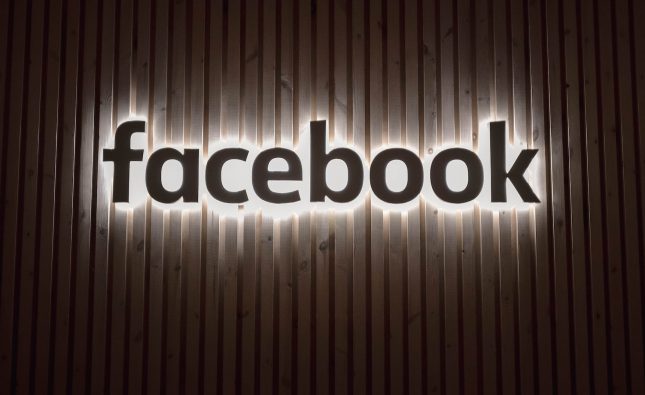
In the realm of digital marketing, Facebook Ads have emerged as a powerful tool for lead generation. With over 2.8 billion monthly active users, Facebook offers unparalleled reach and targeting capabilities that can effectively convert prospects into leads for businesses of all sizes. This article explores the strategies, benefits, implementation steps, and analytical insights associated with leveraging Facebook Ads for lead generation campaigns.
Understanding Lead Generation with Facebook Ads
Lead generation on Facebook involves capturing user interest and converting them into prospects by collecting their contact information, typically through forms or landing pages. Unlike traditional advertising, Facebook Ads allow for precise targeting based on demographics, interests, behaviors, and even past interactions with your business. This targeted approach ensures that ads reach users who are more likely to convert, optimizing return on investment (ROI) for marketers.
Benefits of Using Facebook Ads for Lead Generation
- Wide Audience Reach: With billions of users globally, Facebook enables businesses to reach a diverse audience, ensuring that ads are seen by potential leads across various demographics and geographies.
- Precise Targeting Options: Facebook’s advanced targeting capabilities allow marketers to define their audience based on factors such as age, gender, location, interests, and behavior. This ensures that ads are displayed to users who are most likely to be interested in the product or service offered.
- Cost-Effectiveness: Compared to traditional marketing channels, Facebook Ads offer a cost-effective solution for lead generation. Marketers can set budgets and bids based on their financial capabilities, ensuring that campaigns remain within budget while maximizing reach and conversions.
- Engagement and Interaction: Facebook Ads can be designed to encourage user interaction through likes, comments, shares, and direct messages. This engagement not only boosts ad visibility but also fosters a sense of community around the brand, enhancing trust and credibility.
- Measurable Results: Facebook provides comprehensive analytics tools that enable marketers to track the performance of their ads in real-time. Metrics such as click-through rates (CTR), conversion rates, cost per lead (CPL), and return on ad spend (ROAS) offer valuable insights into campaign effectiveness, allowing for continuous optimization and improvement.
Strategies for Effective Lead Generation Campaigns on Facebook
- Define Clear Objectives: Before launching a campaign, define specific goals such as the number of leads, target audience demographics, and budget allocation. Clear objectives guide campaign strategy and measurement of success.
- Create Compelling Ad Creative: Design visually appealing ads with compelling copy that clearly communicates the value proposition. Use high-quality images or videos, compelling headlines, and persuasive call-to-action (CTA) buttons to encourage user engagement and conversions.
- Utilize Lead Ads: Facebook’s Lead Ads feature simplifies the lead generation process by allowing users to submit their contact information directly within the ad without leaving Facebook. This reduces friction and improves conversion rates.
- Implement Retargeting Strategies: Use Facebook Pixel—a piece of code installed on your website—to track user interactions and create custom audiences for retargeting. Retargeting ads to users who have already shown interest can significantly increase conversion rates.
- Optimize Landing Pages: Ensure that landing pages linked from Facebook Ads are optimized for conversion. Design clear and concise forms, remove distractions, and align messaging with the ad to maintain a seamless user experience.

Implementing Advanced Targeting Strategies
To maximize the effectiveness of Facebook Ads for lead generation, marketers can implement advanced targeting strategies such as lookalike audiences and behavioral targeting. Lookalike audiences allow advertisers to reach new users who share similarities with their existing customer base, based on factors like demographics and interests. Behavioral targeting focuses on users’ past behaviors on Facebook, such as liking pages, clicking ads, or engaging with specific content, enabling precise ad placement to users most likely to convert.
Leveraging Video and Carousel Ads
Video and carousel ads are highly effective formats for capturing attention and driving engagement on Facebook. Video ads can showcase product demonstrations, customer testimonials, or behind-the-scenes footage, fostering a deeper connection with potential leads. Carousel ads, on the other hand, allow multiple images or videos within a single ad, enabling storytelling and highlighting various product features or benefits. These interactive formats enhance user experience and increase the likelihood of ad interaction and lead capture.
A/B Testing and Optimization Strategies
Continuous A/B testing is crucial for optimizing Facebook Ads for lead generation. Marketers can experiment with different ad creatives, headlines, CTAs, and audience segments to identify which combinations yield the highest conversion rates. Testing variables such as ad copy length, visual elements, and landing page design provides actionable insights into what resonates best with the target audience, enabling iterative improvements and campaign refinement over time.
Integrating Facebook Ads with CRM Systems
Integrating Facebook Ads with Customer Relationship Management (CRM) systems enhances lead management and nurturing processes. By syncing lead data collected from Facebook Ads with CRM platforms like Salesforce or HubSpot, marketers can track leads through the sales funnel, automate follow-up communications, and personalize interactions based on user behaviors and preferences. This integration streamlines lead management, improves lead quality, and facilitates seamless communication between marketing and sales teams.
Compliance and Data Privacy Considerations
Adhering to data privacy regulations such as GDPR and CCPA is crucial when using Facebook Ads for lead generation. Marketers must ensure transparent data collection practices, obtain consent for data processing, and provide clear opt-out options. Facebook’s ad policies also require adherence to guidelines regarding prohibited content, targeting practices, and user safety, ensuring campaigns comply with platform rules and industry standards to maintain trust and credibility.
Measuring Return on Investment (ROI) and Performance Metrics
Measuring the success of Facebook Ads for lead generation involves tracking key performance indicators (KPIs) such as conversion rate, cost per lead (CPL), return on ad spend (ROAS), and lead quality metrics. ROI calculations compare the revenue generated from leads acquired through Facebook Ads against advertising costs, providing insights into campaign profitability. Analyzing these metrics enables marketers to optimize budget allocation, refine targeting strategies, and justify investment in Facebook Ads based on tangible business outcomes.
Competitive Analysis: Facebook Ads vs. Other Platforms for Lead Generation
| Platform | Advantages | Examples of Successful Campaigns | Analysis |
| Extensive targeting options; large user base | HubSpot’s lead generation campaigns | Facebook’s detailed targeting and user base make it ideal for broad reach and precise audience segmentation. | |
| Google Ads | Intent-based targeting; search and display networks | Salesforce’s B2B lead generation | Google Ads excel in capturing high-intent users actively searching for products or services, complementing Facebook’s broader reach with targeted intent. |
| Professional networking; B2B audience | Adobe’s B2B lead generation | LinkedIn is effective for targeting business professionals and decision-makers, offering niche-specific ad targeting and networking opportunities. |
Analysis Table: Facebook Ads vs. Other Platforms for Lead Generation
| Platform | Advantages | Examples of Successful Campaigns | Analysis |
| Extensive targeting options; large user base | HubSpot’s lead generation campaigns | Facebook’s detailed targeting and user base make it ideal for broad reach and precise audience segmentation. | |
| Google Ads | Intent-based targeting; search and display networks | Salesforce’s B2B lead generation | Google Ads excel in capturing high-intent users actively searching for products or services, complementing Facebook’s broader reach with targeted intent. |
| Professional networking; B2B audience | Adobe’s B2B lead generation | LinkedIn is effective for targeting business professionals and decision-makers, offering niche-specific ad targeting and networking opportunities. | |
| Visual storytelling; engagement-driven audience | Airbnb’s travel lead generation | Instagram’s visual appeal and engagement focus cater well to brands looking to capture leads through immersive content and storytelling. | |
| Real-time updates; trending topics | Spotify’s music promotion | Twitter’s real-time engagement and trending topics can be leveraged for lead generation campaigns aiming for quick engagement and viral reach. |
Analysis
- Audience Targeting: Facebook’s advantage lies in its extensive user data, allowing for highly targeted campaigns based on demographics, interests, and behaviors, whereas Google Ads focus on intent-based targeting through search queries and display networks.
- Ad Formats: Facebook offers various ad formats including Lead Ads for direct form submissions, whereas Google Ads leverage search ads and display banners for intent-driven conversions.
- Campaign Examples: Successful campaigns such as HubSpot’s lead generation on Facebook demonstrate effective use of targeted ads to reach specific audiences, whereas Google Ads showcase Salesforce’s success in capturing high-intent users actively seeking solutions.
- ROI and Metrics: Both platforms provide robust analytics to measure performance metrics such as CTR, CPL, and ROI, allowing marketers to optimize campaigns based on data-driven insights and refine strategies for maximum effectiveness.
Conclusion
Harnessing the power of Facebook Ads for lead generation represents a pivotal strategy for modern marketers seeking to expand their customer base and drive business growth. The platform’s extensive reach, sophisticated targeting options, and versatile ad formats provide unparalleled opportunities to engage with potential leads effectively. By following strategic approaches such as defining clear objectives, creating compelling ad creatives, implementing advanced targeting strategies, and integrating with CRM systems, businesses can maximize the effectiveness of their lead generation campaigns on Facebook.
Moreover, the ability to measure and analyze key performance metrics such as conversion rates, cost per lead, and return on ad spend enables marketers to refine their strategies continuously and optimize campaign performance. This data-driven approach not only enhances campaign effectiveness but also ensures efficient allocation of marketing budgets, delivering tangible results in terms of lead quality and ROI.
As digital marketing landscapes evolve, staying abreast of Facebook’s ad policies and data privacy regulations remains paramount to maintaining compliance and fostering trust among users. Adhering to best practices in data collection, consent management, and ad content ensures ethical marketing practices while safeguarding user privacy.
In conclusion, Facebook Ads offer a robust platform for lead generation, combining precision targeting with compelling storytelling and interactive engagement. By leveraging these capabilities effectively and adapting to evolving consumer behaviors and technological trends, businesses can forge meaningful connections with their target audiences, drive conversions, and achieve sustainable business growth in the competitive digital marketplace. Embracing innovation and leveraging analytics will continue to be key drivers of success in harnessing Facebook Ads for lead generation strategies moving forward.










